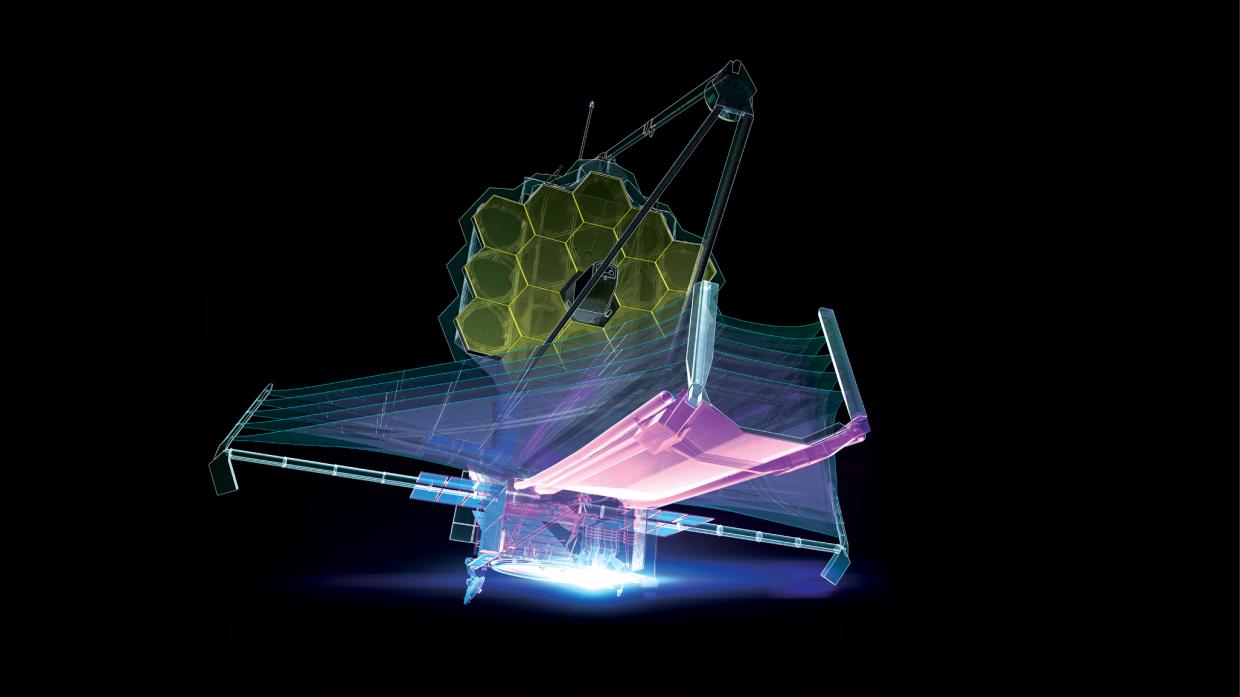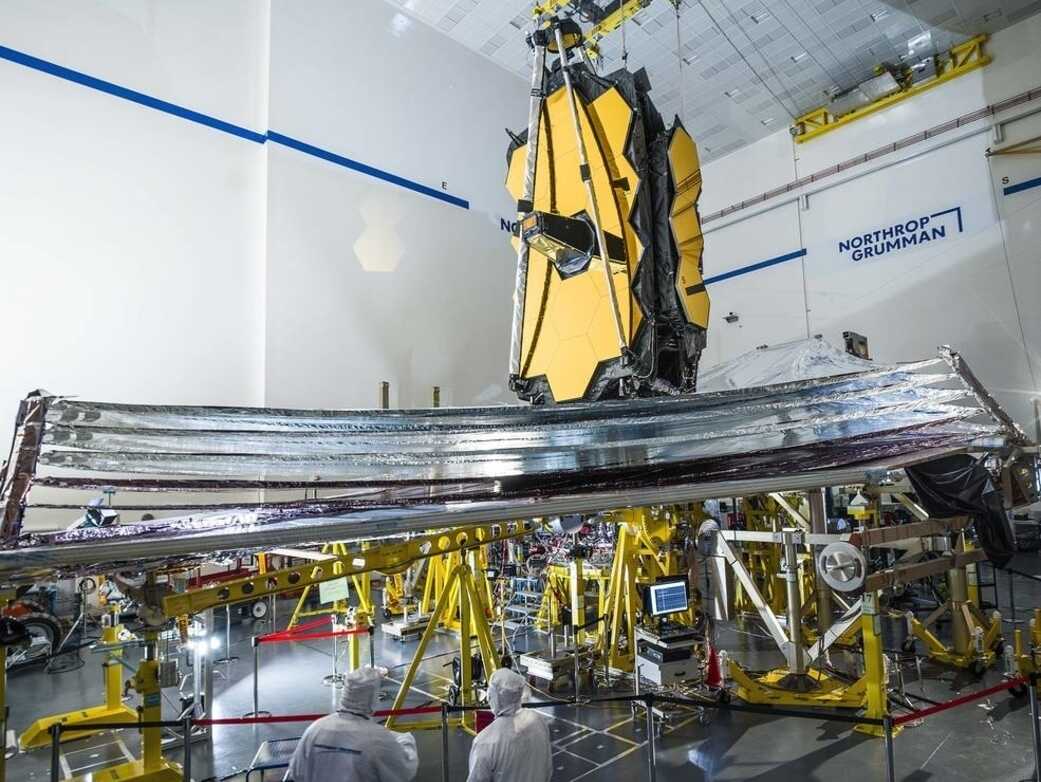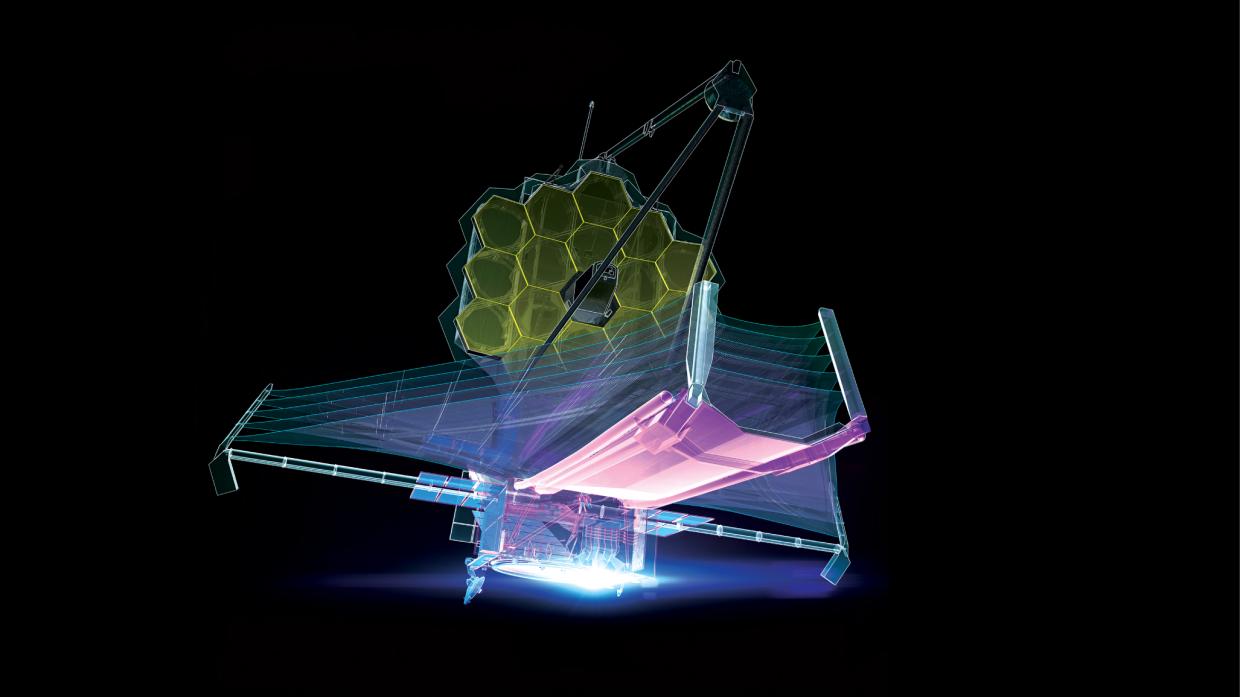
What Is The James Webb Space Telescope’s Progress?
By now many of us know how complicated and important Webb’s initial journey is to the L2 orbit. This process was planned to take quite a few days and be filled with hundreds of deployments. Each of these deployments needs to go perfectly in order for the James Webb Space Telescope to operate properly. Now almost a month after Webb was launched, this brings up the question of how has it progressed so far, and is everything going well?
So far everything has gone according to plan with the James Webb Space Telescope deployments. Most recently the 18 mirror segments that make up the primary mirror have been deployed and adjusted from 12.5mm from the telescope structure to 0.0mm. Within the next few days, we can expect to see the final insertion burn and Webb successfully orbiting L2.
These past 26 days have been quite nerve-racking for NASA and many people keeping track of Webb’s progress. With multiple decades of work and around $10 billion dollars spent, the success of this telescope is a big deal. During these past weeks, Webb has managed to deploy complex parts including the sun shield, main mirror, and more. Here I will go more in-depth into Webb’s progress up until now, and the final steps it needs to take.
JWST Progress

NASA has been very helpful in providing extremely accurate and up-to-date information about every part of Webb. This includes its current location, past developments, and future plans. This information helps give us a good idea of how the mission is going so far, and what we can expect in the coming days. There are four main events I want to highlight based on this information.
Most Recent Event – The first development I want to highlight has to do with the primary mirror of the JWST. This mirror is made up of 18 separate mirror segments that work together to gather and reflect light very precisely. Most recently, these 18 separate segments were adjusted and deployed successfully. This process is not to be confused with the port and starboard primary wing mirror segment deployments. The primary mirror segments were driven 12.5 millimeters away from the telescope structure. Using six motors that deploy each segment approximately half the length of a paper clip, these actuators clear the mirrors from their launch restraints and give each segment enough space to later be adjusted in other directions to the optical starting position for the upcoming wavefront alignment process.
The 18 radius of curvature (ROC) actuators were moved from their launch position as well. Even against beryllium strength, which is six times greater than that of steel, these ROC actuators individually shape the curvature of each mirror segment to set the initial parabolic shape of the primary mirror. The mirrors move in very small increments over the course of around 10 days to complete their deployment. They move approximately 1mm per day each. Most recently this process was successfully completed meaning all 18 of the primary mirror segments have been deployed. NASA provides a graphic showing all 18 segments and their exact distance from the telescope structure. What started at 12.5mm for each segment now shows 0.0mm for each one. While each of these segments has been deployed successfully, they still have quite a few adjustments planned for the future. One of the next steps will be moving mirrors in the micron and nanometer ranges to reach the final optical positions for an aligned telescope. The process of telescope alignment will take approximately three months.
Upcoming Event – Now that Webb has successfully deployed all 18 of the mirror segments, it will move on to one of its final events. As of right now, Webb is just past day 27 in space. In less than two days on day 29, the James Webb Space Telescope will perform an L2 insertion burn. Specifically, Webb is planning to have its Mid Course Correction Burn or MCC2 which will begin the L2 insertion. MCC2 corrects any residual trajectory errors and adjusts the final L2 orbit. The James Webb Space Telescope is launched on a direct path to an orbit around the second Sun-Earth Lagrange Point (L2), but it needs to make its own mid-course thrust correction maneuvers to get there. This is by design, because if Webb gets too much thrust from the Ariane rocket, it can’t turn around to thrust back toward Earth because that would directly expose its telescope optics and structure to the Sun, overheating them and aborting the science mission before it can even begin. Therefore, Webb gets an intentional slight under-burn from the Ariane and uses its own small thrusters and on-board propellant to make up the difference. There are three mid-course correction maneuvers including MCC-1a, MCC-1b, and MCC-2. This is the final burn, MCC-2, which inserts Webb into its L2 halo orbit.
Orbiting L2 – At this point, Webb is well into its deployment and almost at its final destination. I just mentioned the upcoming mid-course correction burn in less than two days’ time. If successful, in just under three days from now, Webb will be orbiting L2. This event is supposed to happen right around 29 and a half days into the mission. Right now Webb is just over 27 days in and everything is going according to plan. After these 29.5 days, Webb will now be orbiting L2. Telescope deployment is complete. Ongoing cooldown and instrument turn-on continue. The telescope and scientific instruments started to cool rapidly in the shade of the sunshield once it was deployed, but it will take several weeks for them to cool all the way down and reach stable temperatures. This cooldown will be carefully controlled with strategically-placed electric heater strips. The remaining five months of commissioning will be all about aligning the optics and calibrating the scientific instruments. In just a few days Webb is set to complete the most complicated deployment process ever attempted in space with a telescope. From here it will fine-tune different components throughout the telescope and prepare to take some of its first images.
Webb’s Progress So Far – In less than a month, Webb has completed hundreds of different vital deployments and actions. Only 18 days ago the sun shield was successfully tensioned and ready to keep Webb cool. Soon after the JWST worked to deploy its two primary folded mirror segments. This process took less than two days and both the port and starboard sides were successfully deployed. This marked a big milestone as Webb was considered fully deployed. From here Webb continued to adjust specific components including each of the 18 segments that I mentioned prior.
Conclusion
So far the James Webb Space Telescope has been an immense success. Just under 1 full month into being launched in space the telescope is almost orbiting L2. Through these past 27 days, the JWST has completed many different deployments including the most recent 18 segment deployment. Webb is now planning to perform its final insertion burn in just a few days. If successful the telescope will not only be fully deployed but also orbiting L2. We will have to keep track of Webb these final days and hope for its success. The telescope will have a very positive impact on not only the space industry but the world and universe we live in as well.
